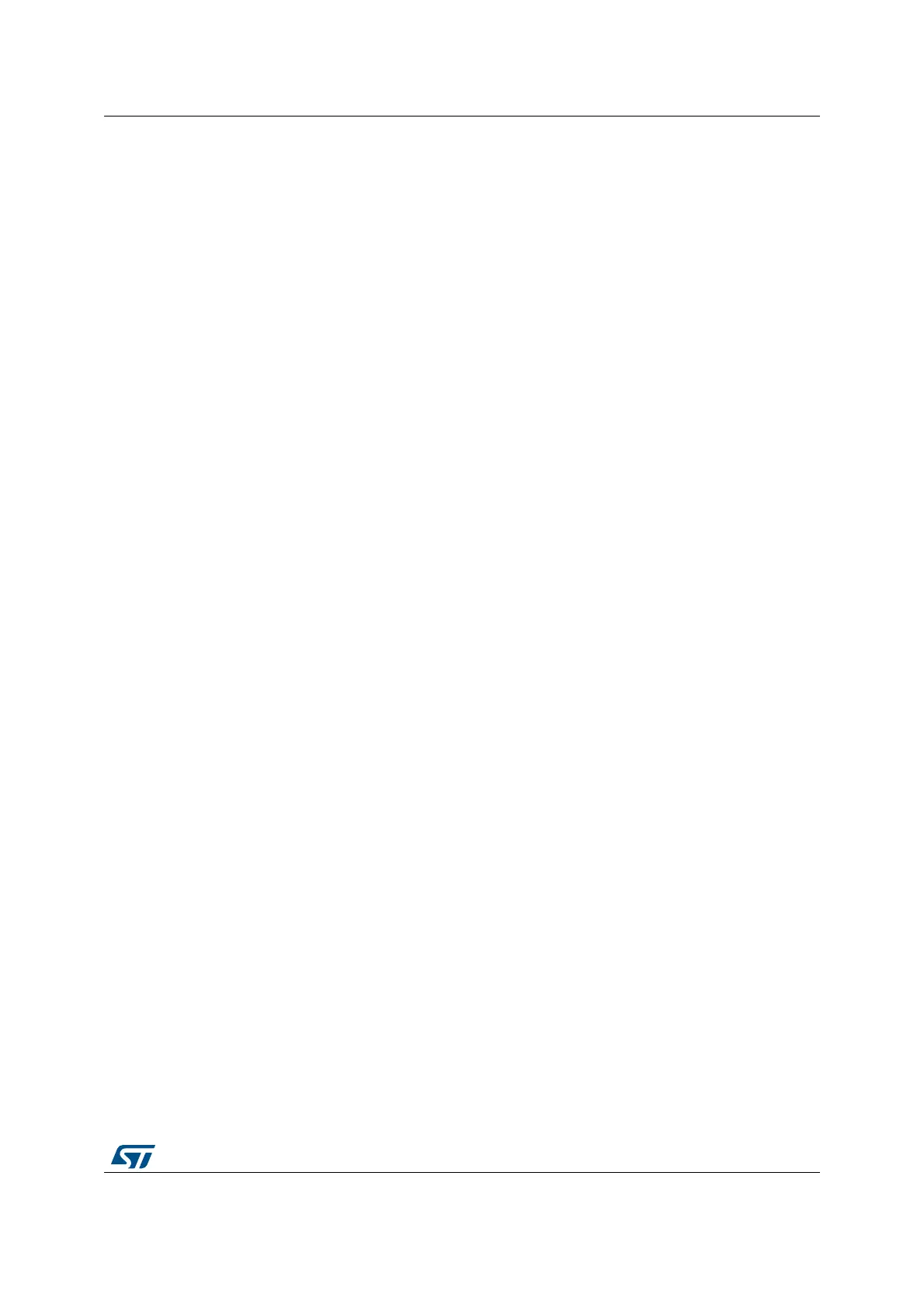DocID024597 Rev 5 475/1830
RM0351 Quad-SPI interface (QUADSPI)
500
When IMODE = 00, the instruction phase is skipped, and the command sequence starts
with the address phase, if present.
Address phase
In the address phase, 1-4 bytes are sent to the Flash memory to indicate the address of the
operation. The number of address bytes to be sent is configured in the ADSIZE[1:0] field of
QUADSPI_CCR[13:12] register. In indirect and automatic-polling modes, the address bytes
to be sent are specified in the ADDRESS[31:0] field of QUADSPI_AR register, while in
memory-mapped mode the address is given directly via the AHB (from the Cortex
®
or from
a DMA).
The address phase can send 1 bit at a time (over SO in single SPI mode), 2 bits at a time
(over IO0/IO1 in dual SPI mode), or 4 bits at a time (over IO0/IO1/IO2/IO3 in quad SPI
mode). This can be configured using the ADMODE[1:0] field of QUADSPI_CCR[11:10]
register.
When ADMODE = 00, the address phase is skipped, and the command sequence proceeds
directly to the next phase, if any.
Alternate-bytes phase
In the alternate-bytes phase, 1-4 bytes are sent to the Flash memory, generally to control
the mode of operation. The number of alternate bytes to be sent is configured in the
ABSIZE[1:0] field of QUADSPI_CCR[17:16] register. The bytes to be sent are specified in
the QUADSPI_ABR register.
The alternate-bytes phase can send 1 bit at a time (over SO in single SPI mode), 2 bits at a
time (over IO0/IO1 in dual SPI mode), or 4 bits at a time (over IO0/IO1/IO2/IO3 in quad SPI
mode). This can be configured using the ABMODE[1:0] field of QUADSPI_CCR[15:14]
register.
When ABMODE = 00, the alternate-bytes phase is skipped, and the command sequence
proceeds directly to the next phase, if any.
There may be times when only a single nibble needs to be sent during the alternate-byte
phase rather than a full byte, such as when dual-mode is used and only two cycles are used
for the alternate bytes. In this case, firmware can use quad-mode (ABMODE = 11) and send
a byte with bits 7 and 3 of ALTERNATE set to ‘1’ (keeping the IO3 line high), and bits 6 and
2 set to ‘0’ (keeping the IO2 line low). In this case the upper two bits of the nibble to be sent
are placed in bits 4:3 of ALTERNATE while the lower two bits are placed in bits 1 and 0. For
example, if the nibble 2 (0010) is to be sent over IO0/IO1, then ALTERNATE should be set
to 0x8A (1000_1010).
Dummy-cycles phase
In the dummy-cycles phase, 1-31 cycles are given without any data being sent or received,
in order to allow the Flash memory the time to prepare for the data phase when higher clock
frequencies are used. The number of cycles given during this phase is specified in the
DCYC[4:0] field of QUADSPI_CCR[22:18] register. In both SDR and DDR modes, the
duration is specified as a number of full CLK cycles.
When DCYC is zero, the dummy-cycles phase is skipped, and the command sequence
proceeds directly to the data phase, if present.
The operating mode of the dummy-cycles phase is determined by DMODE.

